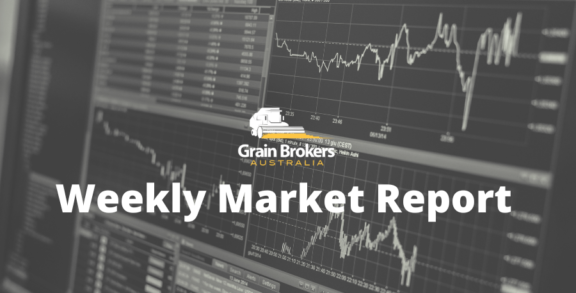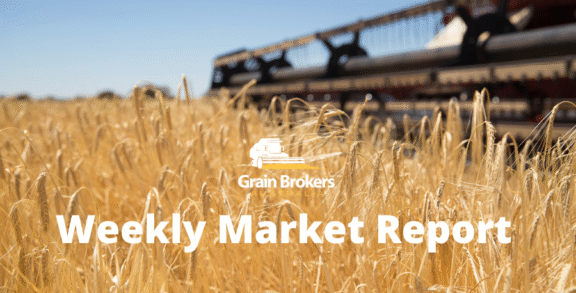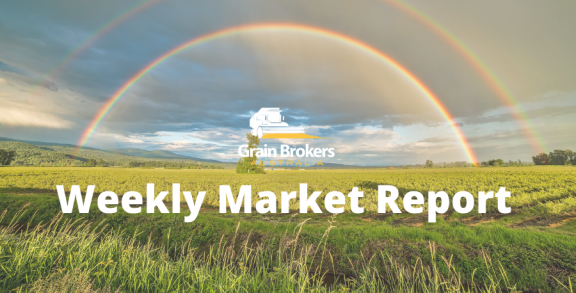
Written by Brendan Dart, Dartboard Commodities Pty Ltd.
Grain swaps have been a popular marketing tool for farmers and traders over the years. On the surface, they are relatively easy products to use, and in many cases, can be very valuable marketing tools.
So, what are the dynamics of entering swaps and what are the benefits of using them? The answer to this is far from straightforward. It needs deeper digging to determine the individual farmer requirements and risk profiles and understanding if the broader market environment looks favourable for swap products.
A swap typically involves selling (or buying) a futures contract on another exchange and converting it into Australian dollars. Using wheat as an example, a typical swap product would involve selling a Chicago futures contract and converting it to AUD to obtain a local wheat price.
The process is simple enough, but it is not without risks. Multiple factors should be considered prior to entering into swap products:
- The individual farmer’s risk profile
- The local conditions and production risks.
- Local market dynamics – what are the factors driving local values?
- Global market relativity – How do Australian values compare with global values?
- Global market dynamics – what are the factors driving global values? This is a broader risk discussion but essential to determine if swaps are appropriate from a risk perspective.
The key driver for using swap products is typically to mitigate local production risks. Forward selling physical grain in dry seasons can leave farmers vulnerable to market volatility. Recent seasons in Australia have highlighted this point very clearly.
The 2018/19 and 2019/20 domestic grain seasons were notable for severe drought conditions across much of the east coast, which decimated grain production and created significant domestic supply issues. This caused a surge in local grain values whereby Australian domestic premiums traded well above global benchmarks to such an extent that sizeable volumes of grain were shipped from Western Australia and South Australia to east coast ports to cover our domestic deficit.
The local market dynamics prevalent throughout these two seasons were ideal for farmers to use swap products, as local prices outpaced global values. This enabled farmers to have some sales in place and mitigate some of the local production risks and subsequently maintain exposure to the local market strength driven by the east coast drought conditions.
However, the 2020/21 season saw Australian production return in style, particularly a substantial rebound to record production across parts of the east coast. This was a fantastic result for both grain farmers and the Australian grain industry. Of course, the main downside to this was a weakening of grain values in Australia relative to global values. The 2021/22 season is also shaping up nicely with some favourable conditions during the early part of the season, which has seen domestic values lagging global markets.
The local market dynamics that we saw last year, and are again unfolding this season, are quite the opposite to the 2018/19 and 2019/20 seasons. Whilst they are not necessarily bad for swap products, the market structure is different and bears examination. While Australian production is ticking along quite nicely this season, the global balance sheet appears to be tightening significantly, elevating the risks around swap products to some degree.
Global market dynamics are changing. In particular, much of the change has been due to production losses inflicted across the major exporter zones of Russia and North America. In addition to losing around 18mmt of production, we have also seen some quality issues in Europe, which has further tightened the supply of milling wheat across the major exporters. As a result, global wheat values have been driven higher, widening the spread to those seen in Australia.
Adding further fuel to the fire is the fact that Russia, the world’s largest wheat exporter, has imposed a floating export tax which has completely distorted export values in the region and, in many respects, largely taken Russian exports out of play. While a healthy supply of wheat still exists in Russia, it is not realistically available for the market today.
The market dynamics in North America warrant particular attention for swap sellers When there are significant production issues in the region risks will elevate, given that the majority of swap products are traded via the Chicago futures exchange. A tight balance sheet in the US market creates a situation where the US futures markets can trade for an extended period at elevated levels. This can skew the value of swap products and add significant unwanted risk in extreme situations (think 2008).
The US and Canada have collectively lost 13.5mmt of wheat production since the June WASDE report, which has tightened domestic stocks to multi-year lows. The global market is trying to understand if they will need additional exports out of the US to cover the potential shortfall in global milling wheat stocks. This equation is far from clear, with global demand yet to be fully determined. However, risks remain in play, and it is likely the market will trade cautiously. US futures values can remain high for much of the season, or until such time as we get increased clarity around global demand.
The bottom line here is that risks have increased for swap sellers this season. Global wheat values have rallied sharply over the past six weeks, and while Australian values have also rallied, we are lagging the global market noticeably. The sudden rally in wheat values has caught many global consumers by surprise. It will take time for the market to adjust to these higher values, or alternately, to start rationing elastic demand.
The challenge for swap sellers today is that the global market has not yet found equilibrium, and risks can remain elevated for some time. Global wheat demand remains unclear, and this will ultimately determine how tight we get for global stocks and where wheat values will need to trade to balance supply. If global milling wheat demand remains strong against tightening supply, there are upside risks for wheat markets.
Ultimately, futures prices can easily outperform physical markets in a bull market, creating additional risks for swap sellers. Therefore, in the current environment, some caution is warranted.
* The information contained in this article is general advice only. There is significant risk associated with trading futures and derivative products.
Call your local Grain Brokers Australia representative on 1300 946 544 to discuss your grain marketing needs.





